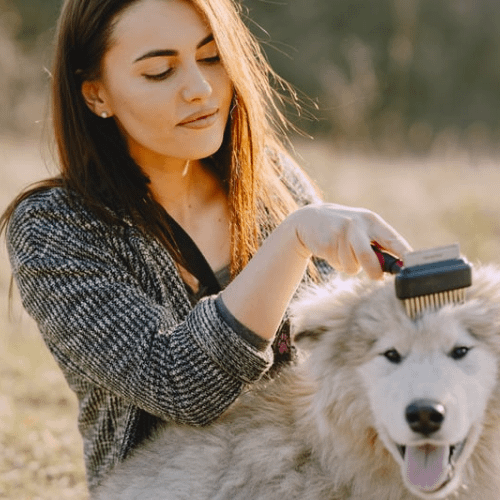Holistic Dog Care: Nurturing Your Furry Child

Holistic dog care goes beyond traditional veterinary medicine, embracing a whole-body approach that addresses a dog’s physical, mental, and emotional health. This comprehensive guide explores how to provide complete care that supports your dog’s overall well-being, creating a happy, healthy, and balanced companion.
Physical Health Foundations
Nutrition: The Core of Wellness
Holistic dog care begins with nutrition. Consider these key principles:
- Choose high-quality, minimally processed foods
- Opt for whole food ingredients
- Consider a balanced diet that may include:
- Lean proteins
- Fresh vegetables and fruits
- Appropriate grains or grain alternatives
- Healthy fats
- Consult with a holistic veterinarian about potential supplements like omega-3 fatty acids, probiotics, and vitamins
Exercise and Physical Activity
Regular exercise is crucial for both physical and emotional health:
- Aim for daily walks and play sessions
- Vary exercise routines to prevent boredom
- Incorporate activities that engage both body and mind
- Consider breed-specific exercise needs
- Monitor your dog’s energy levels and adjust activity accordingly
- Age and size appropriate exercise toys
Natural Healthcare Approaches
Integrate holistic healthcare methods:
- Regular veterinary check-ups
- Preventative care through natural supplements
- Explore alternative therapies such as:
- Acupuncture
- Massage therapy
- Herbal treatments
- Chiropractic care
Emotional Well-being: The Heart of Holistic Care
Understanding Canine Emotional Needs
Dogs are deeply emotional creatures with complex psychological needs:
- Recognize that emotions significantly impact overall health
- Learn to read your dog’s emotional signals
- Understand that emotional stress can manifest as physical symptoms
Creating Emotional Security
Strategies to support your dog’s emotional health:
- Establish consistent routines
- Provide a safe, comfortable living environment with a good orthopedic bed for your dog
- Use positive reinforcement training
- Spend quality time together
- Practice gentle, patient interactions
Mental Stimulation Techniques
Keep your dog’s mind engaged and healthy:
- Introduce puzzle toys and interactive games
- Practice training sessions that challenge their intellect
- Rotate toys to maintain novelty
- Create sensory-rich experiences
- Teach new skills regularly
Stress Management
Help your dog manage emotional challenges:
- Identify and minimize stress triggers
- Create calm environments
- Use techniques like:
- Gentle massage
- Aromatherapy (with veterinarian approval)
- Calming music
- Consistent daily routines
Social and Emotional Connection
Nurture your dog’s social and emotional needs:
- Provide regular social interactions
- Arrange playdates with compatible dogs
- Engage in activities that strengthen your bond
- Practice gentle, consistent communication
- Show patience and understanding
Holistic Grooming and Physical Care
Mindful Grooming Practices
Grooming as a holistic wellness activity:
- Use gentle, natural grooming products
- Make grooming a positive, bonding experience
- Check for any physical or emotional discomfort during grooming
- Practice regular, calm handling to build trust
Environmental Considerations
Create a holistic living environment:
- Use non-toxic cleaning products
- Provide comfortable resting areas
- Ensure access to fresh air and natural light
- Minimize exposure to harmful chemicals
- Create a calm, predictable home atmosphere
Addressing Specific Emotional Challenges
Anxiety and Behavioral Issues
Holistic approaches to emotional challenges:
- Identify root causes of anxiety
- Consider natural calming supplements
- Work with professional trainers specializing in positive reinforcement
- Practice patience and consistent support
- Explore professional behavioral therapy if needed
Holistic dog care is a comprehensive approach that recognizes the intricate connection between physical health and emotional well-being. By addressing your dog’s needs on multiple levels, you create an environment of love, support, and optimal health.
Key Takeaways
- Prioritize whole-body wellness
- Recognize the importance of emotional health
- Be patient and consistent
- Stay informed about holistic care techniques
- Always consult with veterinary professionals
Remember, each dog is unique. What works for one may not work for another. Observe your dog closely, be responsive to their individual needs, and adjust your approach accordingly.

Leave a Reply
You must be logged in to post a comment.


Leave a Comment